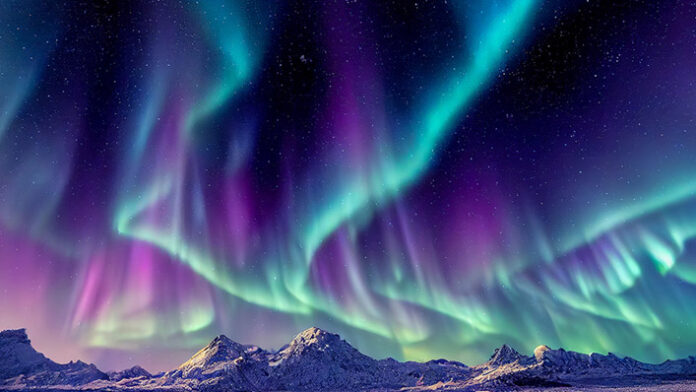Job’s Encounter with God’s Creation
The book of Job provides another profound perspective on God’s creation. In chapters 38-41, God speaks to Job out of a whirlwind, recounting the marvels of the natural world and emphasizing His sovereign control over all creation.
- Job 38:19-20: “What is the way to the abode of light? And where does darkness reside? Can you take them to their places? Do you know the paths to their dwellings?”
God’s rhetorical questions highlight the limitations of human understanding and the vastness of His creative power. The Northern Lights, as part of the “abode of light,” can be seen as part of the wonders that God describes to Job.
Theological Implications
The Northern Lights not only showcase the beauty of God’s creation but also carry deeper theological implications about His nature and our relationship with Him.
God’s Majesty and Power
The Aurora Borealis is a powerful reminder of God’s majesty and omnipotence. The vastness of the skies and the intricate processes that create the Northern Lights reflect a Creator who is both powerful and infinitely creative.
- Isaiah 40:26: “Lift up your eyes and look to the heavens: Who created all these? He who brings out the starry host one by one and calls forth each of them by name. Because of his great power and mighty strength, not one of them is missing.”
The Northern Lights can inspire a sense of awe and reverence for God’s grandeur and the meticulous care He takes in the details of His creation.
God’s Beauty and Artistry
The stunning beauty of the Northern Lights points to God as the ultimate artist. The colors and patterns displayed in the auroras are beyond human ability to replicate, showcasing God’s unmatched creativity.
- Ecclesiastes 3:11: “He has made everything beautiful in its time. He has also set eternity in the human heart; yet no one can fathom what God has done from beginning to end.”
This verse emphasizes that God’s works are inherently beautiful and perfect in their timing, much like the ephemeral yet awe-inspiring Northern Lights.
Signs and Wonders
Throughout the Bible, God uses signs and wonders to communicate with His people. While the Northern Lights are a natural phenomenon, they can also be interpreted as a sign of God’s presence and His ongoing involvement in creation.
- Luke 21:25: “There will be signs in the sun, moon and stars. On the earth, nations will be in anguish and perplexity at the roaring and tossing of the sea.”
Although this passage refers to eschatological events, it underscores the concept that celestial phenomena can be significant in the divine narrative.
Experiencing the Northern Lights
Many people who witness the Northern Lights describe it as a spiritual experience. The sense of wonder and awe can draw individuals closer to God, prompting reflections on His power and majesty.
Testimonies of Awe
Visitors to regions where the Northern Lights are visible often recount feeling a profound sense of connection to the divine. The beauty and grandeur of the auroras can lead to moments of worship and gratitude.
- Psalm 65:8: “The whole earth is filled with awe at your wonders; where morning dawns, where evening fades, you call forth songs of joy.”
This verse captures the sense of joy and reverence that the natural world can inspire, a fitting description for the experience of witnessing the Northern Lights.

